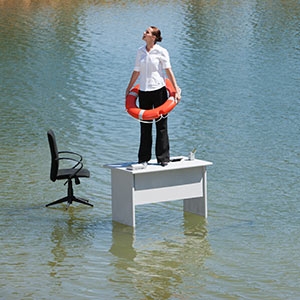5 crisis management tips to get your project back on track.
 04.05.2015 -
Knowledge is something you can never have enough of, whether you’re an experienced project manager or a newcomer. That’s why we’ve put together some tips from a genuine project management expert, Hans Stromeyer. During the 1990s, Hans Stromeyer managed award winning aerospace projects and is today President and CEO of the consultancy and training services company, Stromeyer & Partners, which also provides training to project managers for IAPM certification. Moreover he's President of the IAPM International Association of Project Managers.
04.05.2015 -
Knowledge is something you can never have enough of, whether you’re an experienced project manager or a newcomer. That’s why we’ve put together some tips from a genuine project management expert, Hans Stromeyer. During the 1990s, Hans Stromeyer managed award winning aerospace projects and is today President and CEO of the consultancy and training services company, Stromeyer & Partners, which also provides training to project managers for IAPM certification. Moreover he's President of the IAPM International Association of Project Managers.1. Recruit an external crisis manager to your team
A project in crisis is an emotionally charged situation for everyone involved. That’s why it’s important to assign crisis management to at least one person who is brought into the team from outside and is sufficiently detached from the situation to keep a cool head. You have to choose someone who will take a calm and considered approach to developing an effective crisis strategy and get all the project stakeholders to cooperate in its implementation. The crisis manager can be someone in your own organisation or you can call in an external consultant.
2. Review the project manager’s role or, if you are the project manager, review your own status
If a project manager is to lead the project out of crisis, he has to be an authority figure to everyone involved - the team, project partners and the customer. This is because, in crisis situations, strong leadership is absolutely essential. In many cases, the project manager’s authority is gradually eroded as the crisis unfolds. This can happen because other project participants don’t accept his management competence, because there is opposition within the organisation or because he has to shoulder the blame for things that he is not responsible for. If the latter applies, he should be replaced with another project manager. If it doesn’t, he can assume his management responsibilities again when the crisis is over.
3. Communicate with stakeholders first, then analyse the project
One central function of a crisis manager is stakeholder management. This necessitates a great deal of tact and diplomacy. Clever crisis managers always conduct face-to-face meetings as the first step in crisis management so that they can assess the expectations of all the people involved in and associated with the project. Generally, these people feel very unsettled, impatient and fearful in a crisis situation. The crisis manager will do everything in his power to build personal relationships with the key stakeholders and decision makers. In the next step, he forms a core team of selected project participants who will be involved in future decisions. Information events, regular project meetings, a project extranet and the social media are all important tools in the communication process.
4. Analysis of the project and reasons for the crisis
At the outset of the crisis management process, a comprehensive analysis of the project should be performed in addition to re-motivating all project participants. The analysis should cover the main aspects of project work and identify weaknesses and strengths. The Deming Cycle, which includes the four steps of plan, do, check and act, is one option for analysing the project. In the analysis phase, it is necessary to answer questions such as: How does the project manager view his management responsibility? How does he treat his team? Does he follow project management rules? Questions relating to the crisis itself include: What is the current project status? What are the problems and what is causing them? Could the problems have been caused by failure to include key individuals in the project?
5. Address all problems frankly and courageously
It is the crisis manager’s responsibility to make an action recommendation. There are three options available to him:
1. Continue the project after making the necessary adjustments.
2. Radical changes, such as the replacement of team members and possibly even the project manager.
3. Abandonment of the project.
As soon as the decision has been put into action, the crisis manager either withdraws or takes over the project manager’s role. Crisis managers are generally interim managers. This is because they have to have the courage to make unpopular decisions when necessary and be willing to be viewed as the enemy if it serves the project cause. Crisis managers in projects often have to call long-established structures and concepts into question and make changes - which generally meet with resistance.
« Back to overview
